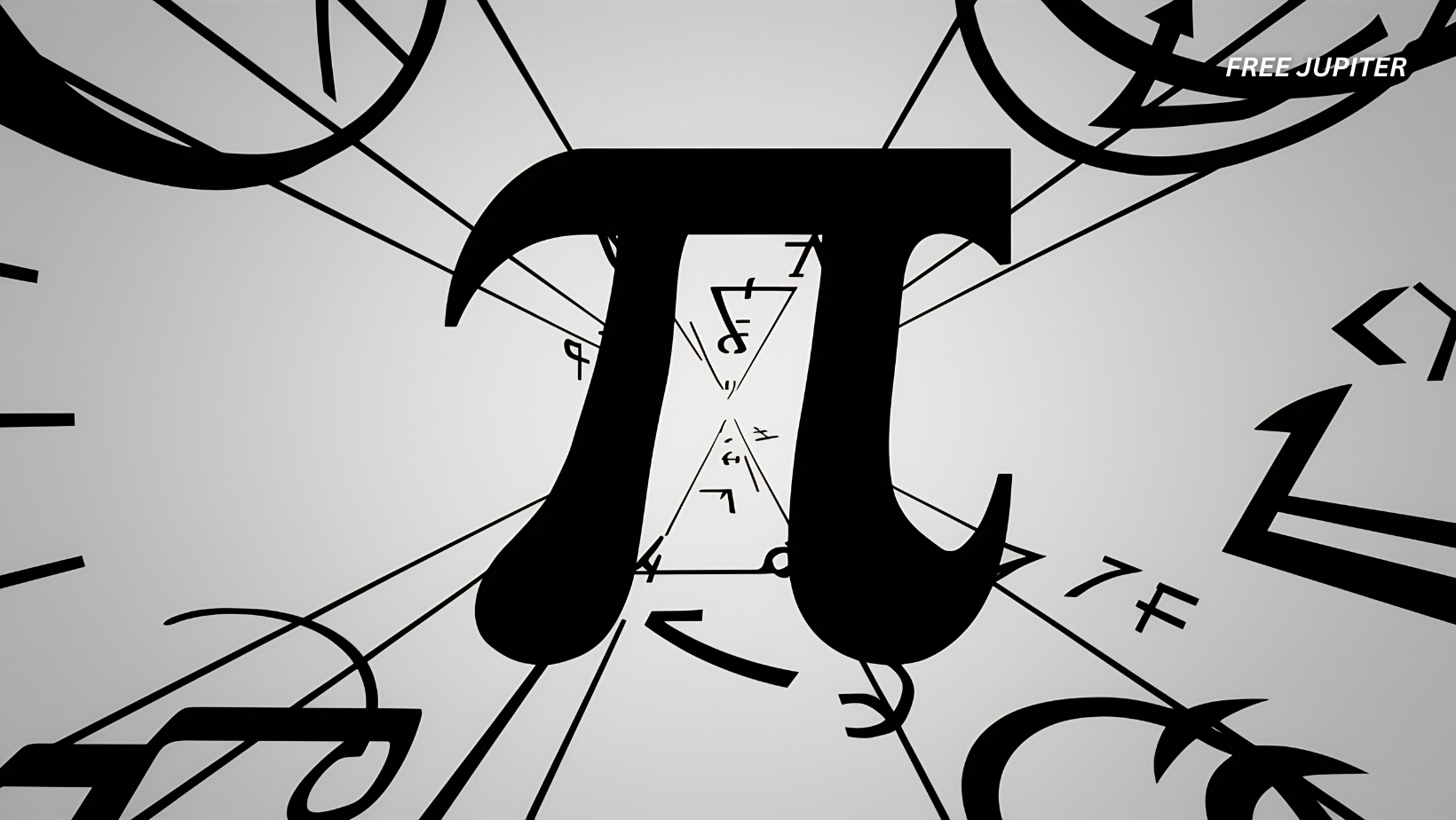When most of us think of pi (π), we imagine the number we learned in school: 3.14 (maybe followed by a few more digits if you were ambitious). Some people know the quirky fact that pi goes on forever without repeating, making it an irrational number. And for math enthusiasts, pi is almost magical—showing up in places you’d never expect, from the geometry of circles to the patterns of rippling waves.
Now, in an unexpected twist, physicists are pushing pi into new territory. Instead of treating it as just a timeless mathematical constant, they’ve uncovered a fresh way of representing pi using the tools of quantum mechanics—the science that explains how the tiniest building blocks of the universe behave.
This isn’t just a nerdy math trick. It’s part of a deeper effort to make complex calculations simpler, more efficient, and, frankly, more elegant.
Why Reinvent Pi?
You might be wondering: Do we really need a new formula for pi? Isn’t 3.14159… enough?
The short answer: pi itself isn’t changing. What’s changing is how we can express pi in mathematical series—formulas that add up infinitely small bits to reach pi with remarkable accuracy.
The new approach comes from two physicists, Arnab Priya Saha and Aninda Sinha, who recently published their work in the journal Physical Review Letters. Their model doesn’t replace pi; rather, it gives us a different mathematical road to reach it. And in the world of physics, the path you choose matters a lot.
When scientists study particles at the quantum level, they often rely on huge, complex calculations. These can take up enormous computing power—sometimes days, weeks, or even months. Finding a cleaner, shorter series that quickly converges to pi makes life easier for researchers, whether they’re simulating black holes, predicting particle collisions, or designing next-generation materials.
Think of it this way: pi is like a destination on a map. We already know how to get there, but if someone finds a shortcut that avoids traffic and potholes, why wouldn’t we take it?
Scientists Have Accidentally Discovered a New Formula for Pi
Read more: Scientists Say They Have Discovered Hidden Physics in Vincent van Gogh’s ‘Starry Night’
Optimization: Nature’s Favorite Trick
What Saha and Sinha accomplished can be summed up in one word: optimization.
Optimization is simply making something as effective or efficient as possible. We do it every day without realizing it:
- Walking paths: People cut across the grass instead of following paved sidewalks, creating dirt shortcuts.
- Streaming videos: Early YouTube clips used to buffer in blocky chunks, showing blurry colors first and sharpening later. That’s optimization at work.
- Animation: Classic cartoons saved time by drawing static backgrounds once, then moving only the characters on top.
In science, optimization is about finding smarter ways to handle messy, complicated data. In this case, the physicists combined two powerful tools:
- Feynman diagrams – visual maps of how particles interact.
- The Euler beta function – a math tool linked to string theory.
Put together, these methods created a series that neatly folds into pi. Even better, their formula doesn’t need as many steps as older models to get to pi’s precise value. That’s like solving a 1,000-piece puzzle with only 200 pieces.
A Quick Detour: What’s So Special About Pi?
Before diving deeper, it’s worth revisiting why pi is such a big deal.
Pi shows up everywhere, not just in circles. Here are a few surprising places you’ll spot it:
- Nature’s rhythms: The way pendulums swing and waves ripple often hide pi in their equations.
- Electromagnetism: Maxwell’s equations, which explain light and electricity, sneak pi into the math.
- Cosmic mysteries: Even in Einstein’s theory of relativity, pi finds its way into the math of spacetime.
And here’s the kicker: no matter how far you calculate pi’s digits, they never repeat or end. We’ve already computed over 62 trillion digits of pi using supercomputers. Do we need that many? Not really. Most science only requires a handful of digits. For example:
- NASA only needs 15 digits of pi to calculate spacecraft trajectories with stunning precision.
- Everyday calculations? Just 3.14 will usually do.
But the thrill of pushing pi further—and finding clever new ways to express it—keeps mathematicians and physicists hooked.
The Beauty of Series
To really get why this new formula matters, let’s talk about series.
A series is just a sum of terms that keeps going:
- Some series converge—their terms settle toward a specific number, like pi.
- Others diverge—their terms spiral out endlessly, never locking onto a value.
The magic happens when a series converges quickly, meaning you can reach a highly accurate result without summing a million terms. That’s what Saha and Sinha managed: their series hits pi with fewer steps than expected.
This is a big deal for physics. At the quantum level, particles are constantly scattering, colliding, and interacting. Each tiny process can be represented with a series. Having a faster, cleaner series is like swapping a clunky flip phone for a modern smartphone—it gets the job done with far less hassle.
Read more: The ‘Alien Language’ Problem That Has Stumped Mathematicians For Decades May Finally Have A Solution
A Look Back: The 1970s Attempt
Interestingly, this isn’t the first time scientists poked at this idea. Back in the 1970s, researchers explored similar methods. But the math was just too messy. Computers weren’t powerful enough, and the formulas didn’t behave nicely.
Fast forward to today: with stronger computers and sharper mathematical tools, Saha and Sinha revisited the problem. They discovered that with some adjustments, the approach actually works. The result? A sleek new representation of pi that converges beautifully.
The Human Side of Math
Here’s something refreshing: even though this discovery could help in physics, the scientists admit part of the motivation is simply joy.
“Doing this kind of work, although it may not see an immediate application in daily life, gives the pure pleasure of doing theory for the sake of doing it,” Sinha explained in his statement.
This highlights an important truth: not all science has to be practical right away. Sometimes it’s about curiosity, beauty, and the intellectual adventure of solving a puzzle. And history shows that “useless” math often finds surprising uses later. For example:
- Number theory once seemed like a purely abstract field—today, it powers modern encryption and keeps your bank details safe.
- Einstein’s relativity once looked like an esoteric theory—now, it underpins GPS technology in your phone.
Who knows where this new pi series might show up in the future?
Related Threads: Other Strange Tales of Pi
If you think this is the only quirky pi story, think again. Here are a couple of pi-related adventures worth mentioning:
- Ramanujan’s Wild Formulas
The legendary Indian mathematician Srinivasa Ramanujan wrote down bizarre-looking series for pi in the early 1900s. Many were so efficient that they’re still used in modern calculations. His work, largely based on intuition, shocked Western mathematicians of the time. - Chudnovsky Brothers and Supercomputers
In the 1980s, the Chudnovsky brothers developed a formula so powerful it became the backbone of record-breaking pi calculations. Their method, combined with modern computing, is how we got to trillions of digits today. - Pi Day (March 14)
Celebrated worldwide, Pi Day blends math enthusiasm with pie-eating contests and quirky events. It’s proof that even a never-ending number can be fun.
Read more: ‘3D Time’ May Be the Missing Piece in Physics, According to Wild New Research
Why This Matters
At first glance, a new formula for pi might sound like trivia. But in reality, it’s another reminder of how science advances: tiny optimizations, fresh perspectives, and a willingness to revisit old ideas with new tools.
Saha and Sinha’s work is part of a much bigger story: how humans continually refine our understanding of the universe. Whether it’s circles, particles, or galaxies, pi quietly threads through the equations, reminding us that even the simplest-seeming numbers have infinite depth.
So the next time you see 3.14 scribbled on a coffee mug or a t-shirt, remember—it’s not just a math joke. It’s a symbol of humanity’s ongoing quest to make sense of reality, one formula at a time.
Featured image: Freepik.
Friendly Note: FreeJupiter.com shares general information for curious minds. Please fact-check all claims and double-check health info with a qualified professional. 🌱










